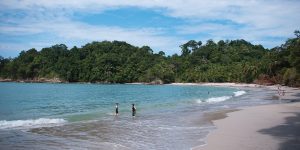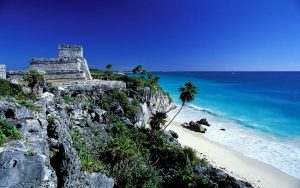Day 1 Cuzco/Chikiska
Today you will drive to Cachora and trek to Chikiska. Early in the morning, you leave Cusco and drive on good tarmac road until turning off to the beautiful village of Cachora. Your trekking team will be waiting for you near the trailhead. After an early lunch, you will start to descend the switchback trail, 1600m (5250ft) into the Apurimac canyon and the small settlement of Chikiska where you camp for the night.
Day 2 Chikiska/Choquequirao
After a delicious breakfast, you will continue down to cross the roaring Apurimac river. Now it is time to climb past the small communities of Santa Rosa and Maranpata to your camp next to the Choquequirao ruins. The path is good though steep and it can get very hot. This is a long tough day requiring an early start but the scenery more than makes up for the hardships endured.
Day 3 Choquequirao
A fifteen-minute walk takes you to the main square of the amazing Choquequirao ruins. Perched on a tiny hilltop 1,700m (5580ft) above the Apurimac, the location and views are awe-inspiring. The ruins cover an area far bigger than Machu Picchu. Enormous curving terraces, ritual baths and a fine main plaza are just some of the highlights. Those with the energy can even descend to see the famous white stone llamas laid into the rock. Choquequirao remains a mystery. It was not mentioned in the Spanish chronicles and although Hiram Bingham visited it before Machu Picchu he failed to realise its importance. Large areas remain covered in the thick cloud forest, giving you a true Indiana Jones experience. Even today it receives very few visitors, protected by its remote location.
After a great day exploring you return to base camp to relax and ponder upon all that you have learnt and seen.
Day 4 Choquequirao/Maizal
You will leave early for the short climb to the pass. Then it is downhill 1400m past the recently discovered ruins of Pincha Unuyoc to the Rio Blanco where you can dip your feet in the cool waters. Just beware of the biting sand-flies. Known as “Pumahuacachi”, their name means “makes the puma cry”.Refreshed, you climb steeply again, 1,200m to the small and beautifully located campsite of Maizal at an altitude of 3,000m. This is probably the toughest day of the trip but if you have prepared well and are determined, you will succeed.
Day 5 Maizal/Lucmabamba
Maizal to Yanama, drive to Lucmabamba. Today, you leave camp behind and climb past old silver mines to the highest pass of the trip. Abra San Juan at 4,000m, affords spectacular views of the Cordillera Vilcabamba mountain range. You will then take a delightful and at times precipitous path down to the charming Andean village of Yanama. Here you say goodbye to your arrieros and climb aboard the waiting vehicle for the spectacular drive on a brand-new road over the Totora pass and down to the small hamlet of Lucmabamba.
Day 6 Lucmabamba/Machu Picchu
Today is your final day of hiking. You will take a spectacular royal Inca trail up through lush coffee and tropical fruit plantations, into pristine cloud forest. As the path crests the ridge, old Inca walls appear out of the forest and you step into the recently cleared ruins of Llactapata. Hiram Bingham got here too, but the map he drew was so bad, neither he nor anyone else could find the ruins again for 80 years. In the mid 1990’s, an Anglo-American team found them once more, totally covered over by thick jungle vines. Step a few metres further and you will see just why the Incas built here. The view across to Machu Picchu is magnificent. And few tourists have ever seen it from this side. After some time to sit, contemplate the view and watch the Andean Swifts playing overhead, you descend steeply to the Urubamba valley and the hydroelectric plant train station.
From here you have the option to either wait for the short but spectacular train ride, or hike two to three hours along the rail-track to the bustling town of Machu Picchu Pueblo and your hotel for the night.
Day 7 Machu Picchu/Cuzco
Today you explore the pinnacle of Inca engineering – Machu Picchu.
For years it was lost to the jungle. Rediscovered in 1911 by the Yale professor Hiram Bingham, declared a UNESCO World Heritage Site in 1983 and one of the New Seven Wonders of the World in 2007, Machu Picchu exceeds all expectations. This astounding site lies in an even more astonishing location. Perched high on an inaccessible hilltop it is protected by huge cliffs and the raging Urubamba river. Things are slightly easier now than in the time of the Incas and so you start your day with a twenty-minute bus ride up to the site.
Please discus with your guide exactly what time you wish to arrive at Machu Picchu. The guided tour takes around two hours leaving you a few hours free to wander amongst the old Inca walls and just sit and take in the scale of the place on your own. For those who want to walk a bit more, you could take the hour long trail up to the Sun Gate, or a shorter trail to visit the Inca Bridge which once spanned a sheer cliff face. Eventually the time comes to catch the bus down to Machu Picchu Pueblo and board your train back along the Urubamba River. The scenery is beautiful and the train jolts softly along, allowing you to sit, stare out the window and reflect on all you have seen.



















































